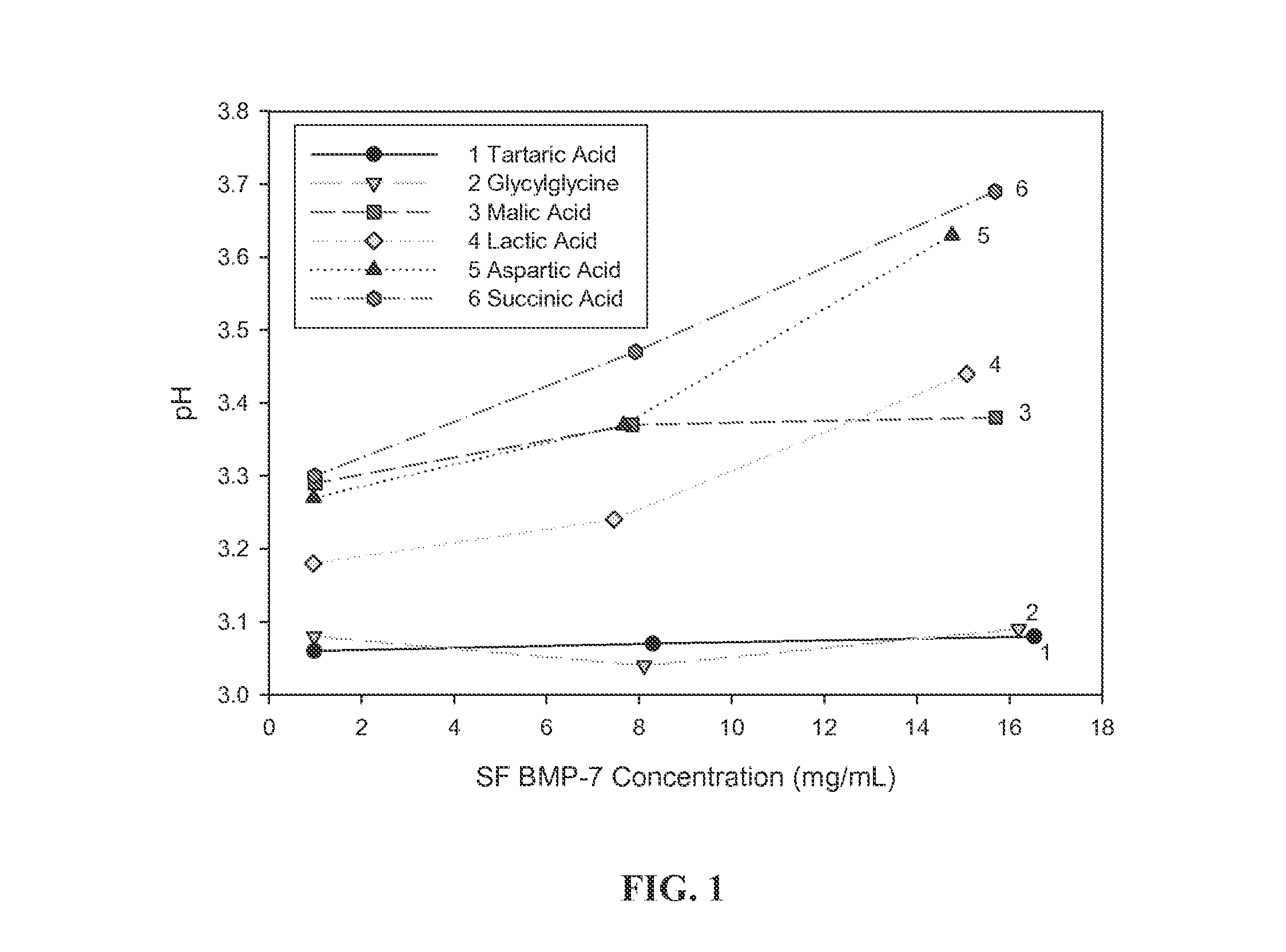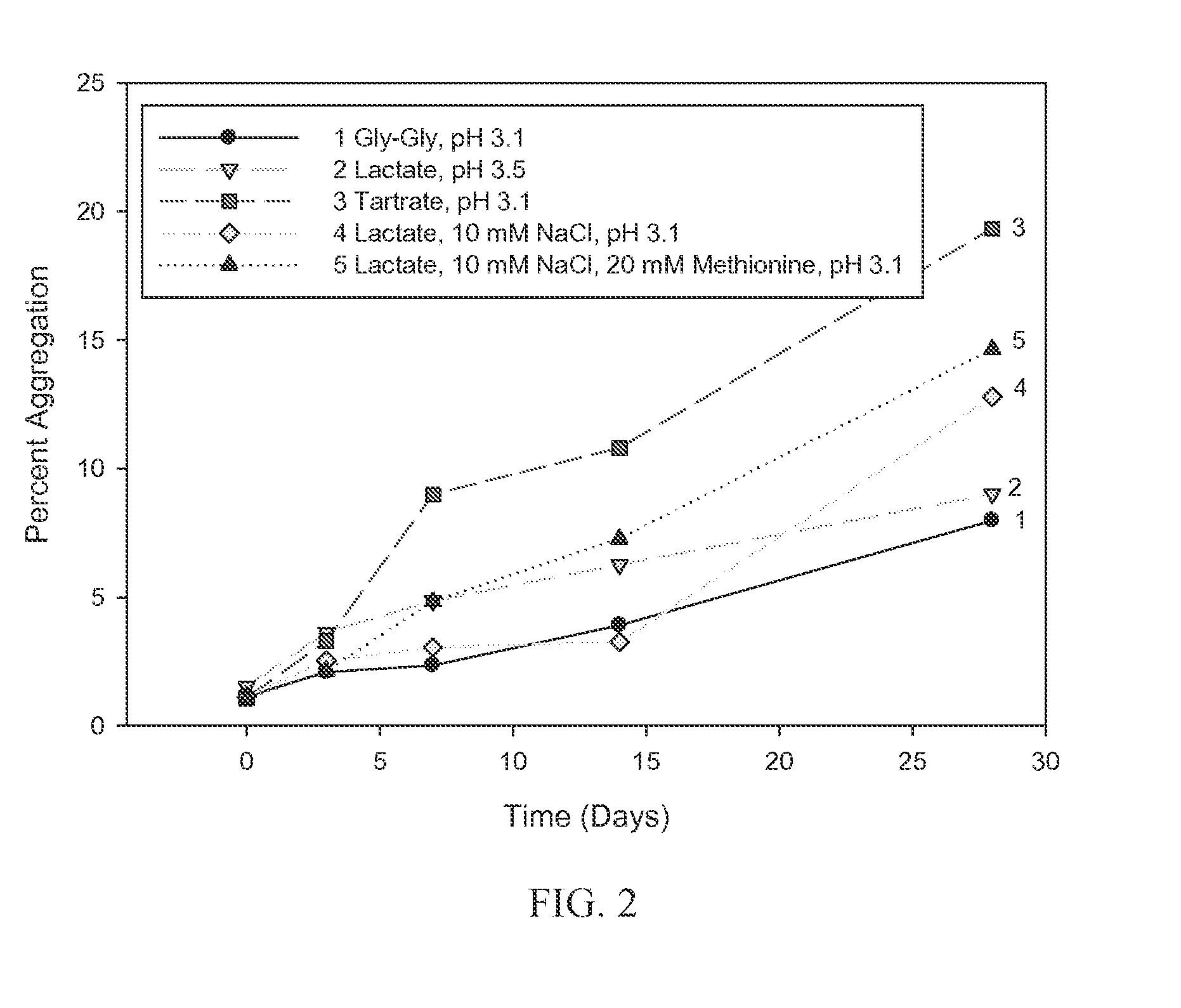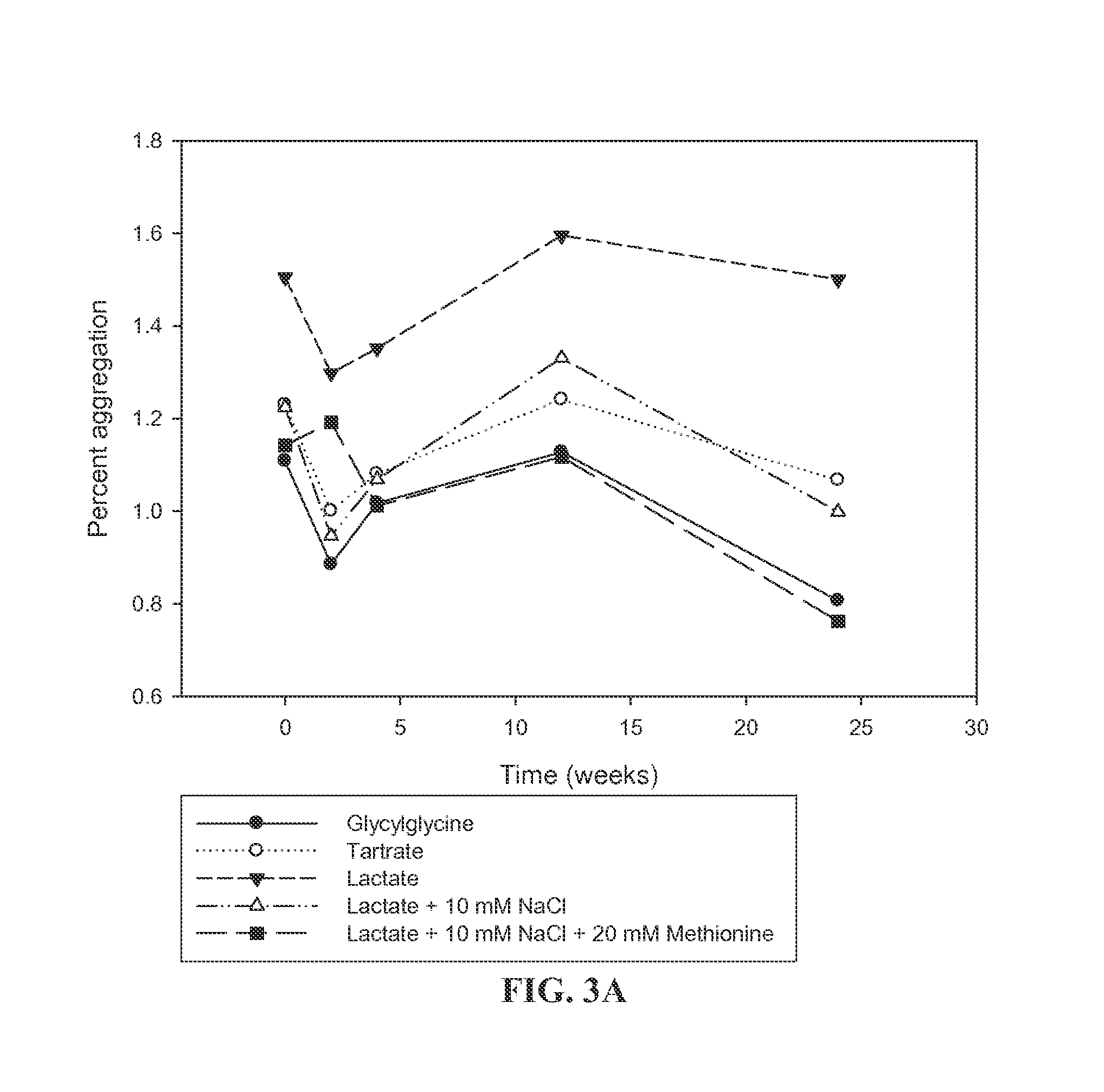Buffers for Controlling the pH of Bone Morphogenetic Proteins
a morphogenetic protein and buffer technology, applied in the direction of peptide/protein ingredients, immunological disorders, peptide/protein ingredients, etc., can solve the problems of increasing the stability of bmp formulations, increasing the ionic strength of formulations, and increasing so as to improve the stability of formulations, limit the stability of bmps, and increase the ph of buffers
- Summary
- Abstract
- Description
- Claims
- Application Information
AI Technical Summary
Benefits of technology
Problems solved by technology
Method used
Image
Examples
example 1
Glycylglycine Buffer and Tartaric Acid Buffer Stabilizes the pH of BMP Formulations at Increasing Concentrations of BMP
[0071]To evaluate the potential for buffers to mitigate the pH increase observed in highly concentrated BMP formulations, six buffers were tested using the exemplary BMP, BMP-7: tartaric acid (pKa 2.98, 4.34), glycylglycine (pKa 3.14), malic acid (pKa 3.40), lactic acid (pKa 3.86), aspartic acid (pKa 3.90), and succinic acid (pKa 4.21).
[0072]Each buffer was prepared at a concentration of 10 mM and the pH was adjusted with 1 N HCl or 1 N NaOH as needed to yield a final pH of 3.0. Each buffer also contained 9% trehalose. BMP-7 in 50 mM acetic acid at 1.6 mg / mL was concentrated to 10 mg / mL and then dialyzed info each of the six buffers. After dialysis, the concentration of the protein in each buffer was 15 to 16 mg / mL. The concentration of the protein and the pH at room temperature were measured for each buffer. Subsequently, each of the protein solutions were diluted ...
example 2
Glycylglycine Buffers and Tartaric Acid Buffers Lend Stability to BMP Liquid Formulations Over Time by Reducing Aggregation
[0074]A liquid stability study was conducted to evaluate protein aggregation in BMP formulations using the exemplary BMP, BMP-7, with buffers of 10 mM glycylglycine (pH 3.1), 10 mM tartrate (pH 3.1), 10 mM lactate (pH 3.5), 10 mM lactate with 10 mM NaCl (pH 3.1), and 10 mM lactate with 10 mM NaCl and 20 mM methionine (pH 3.1). Formulations that minimize changes in the protein, including aggregation, provide improved stability and consistency of lyophilized preparations. The BMP-7 concentration was 16 mg / mL. The formulations were held under accelerated stability conditions at 40° C. for 4 weeks. The percent aggregation of BMP-7 in the liquid formulations was measured by size exclusion chromatography and the results are shown in FIG. 2.
[0075]As shown in FIG. 2, the formulations with glycylglycine buffer at pH 3.1 exhibited the lowest rate of aggregation increase o...
example 3
Glycylglycine Buffers and Tartaric Acid Buffers Lend Stability to BMP Lyophilized Formulations Over Time by Reducing Aggregation
[0076]An accelerated stability study of both lyophilized liquid and lyophilized BMP and buffer formulations was conducted to evaluate BMP aggregation in formulations with buffers of 10 mM glycylglycine HCl (pH 3.1), 10 mM tartrate (pH 3.1), 10 mM lactate (pH 3.1), 10 mM lactate with 10 mM NaCl (pH 3.1), and 10 mM lactate with 10 mM NaCl and 20 mM methionine (pH 3.1) using the exemplary BMP, BMP-7. The BMP-7 concentration was either 1 mg / mL or 16 mg / mL. The formulations for the liquid stability study were dispensed into vials and held at 40° C. for 2 months or lyophilized and held at 40° C. for 6 months.
[0077]As shown in FIG. 3A, BMP-7 formulations containing lactate with methionine and glycylglycine had the lowest aggregation rates for those formulation buffers at 1 mg / mL at 6 months. As shown in FIG. 3B, at 16 mg / mL, there was an increase observed in prote...
PUM
| Property | Measurement | Unit |
|---|---|---|
| concentration | aaaaa | aaaaa |
| concentration | aaaaa | aaaaa |
| concentration | aaaaa | aaaaa |
Abstract
Description
Claims
Application Information
 Login to View More
Login to View More - R&D
- Intellectual Property
- Life Sciences
- Materials
- Tech Scout
- Unparalleled Data Quality
- Higher Quality Content
- 60% Fewer Hallucinations
Browse by: Latest US Patents, China's latest patents, Technical Efficacy Thesaurus, Application Domain, Technology Topic, Popular Technical Reports.
© 2025 PatSnap. All rights reserved.Legal|Privacy policy|Modern Slavery Act Transparency Statement|Sitemap|About US| Contact US: help@patsnap.com



